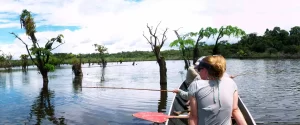Community-Based Tourism in the Amazon Rainforest
The Amazon Rainforest, one of the most biodiverse places on the planet, is not only a destination for nature lovers but also a space where local communities have embraced community-based tourism as a sustainable alternative. This tourism model blends ecological preservation, cultural heritage, and social empowerment, offering visitors a meaningful way to explore the region while supporting the well-being of its people.
Unlike mass tourism, community-based tourism is built on local participation. Communities manage tourism activities and benefit directly from them, allowing them to protect their environment and maintain their traditions. In the Amazon, this has become a powerful tool to combat deforestation, promote conservation, and preserve indigenous culture.
Visitors are invited to experience the rainforest through the eyes of those who call it home. Activities include guided jungle hikes, canoe trips, wildlife and birdwatching, visits to local villages, and participation in ancestral rituals led by community shamans. These immersive experiences create deep connections between travelers and the environment, while also offering a respectful insight into indigenous life.
In Ecuador, several community-run lodges stand out for their commitment to sustainability and cultural preservation:
Sani Lodge and Napo Wildlife Center, both operated by Kichwa communities, offer rainforest adventures and cultural exchange in the heart of Orellana Province.
Yachana Lodge combines ecotourism with educational initiatives that empower youth and promote sustainable development.
Casa del Suizo collaborates with local communities to offer authentic Amazon experiences, including traditional dances and craft workshops.
Sinchi Warmi, led by Kichwa women, focuses on women’s empowerment and shares their culture through ceremonies and nature-based activities.
For tourists, community-based tourism brings numerous benefits: meaningful cultural encounters, unique nature experiences, and the satisfaction of contributing to a positive impact. By choosing responsible operators, respecting local customs, and supporting community initiatives through the purchase of local products, travelers can make a real difference.
In conclusion, community-based tourism in the Amazon is more than just an adventure — it is a way to protect nature, preserve traditions, and uplift communities. Choosing this type of travel means being part of a collective effort to safeguard one of the world’s most precious regions.


